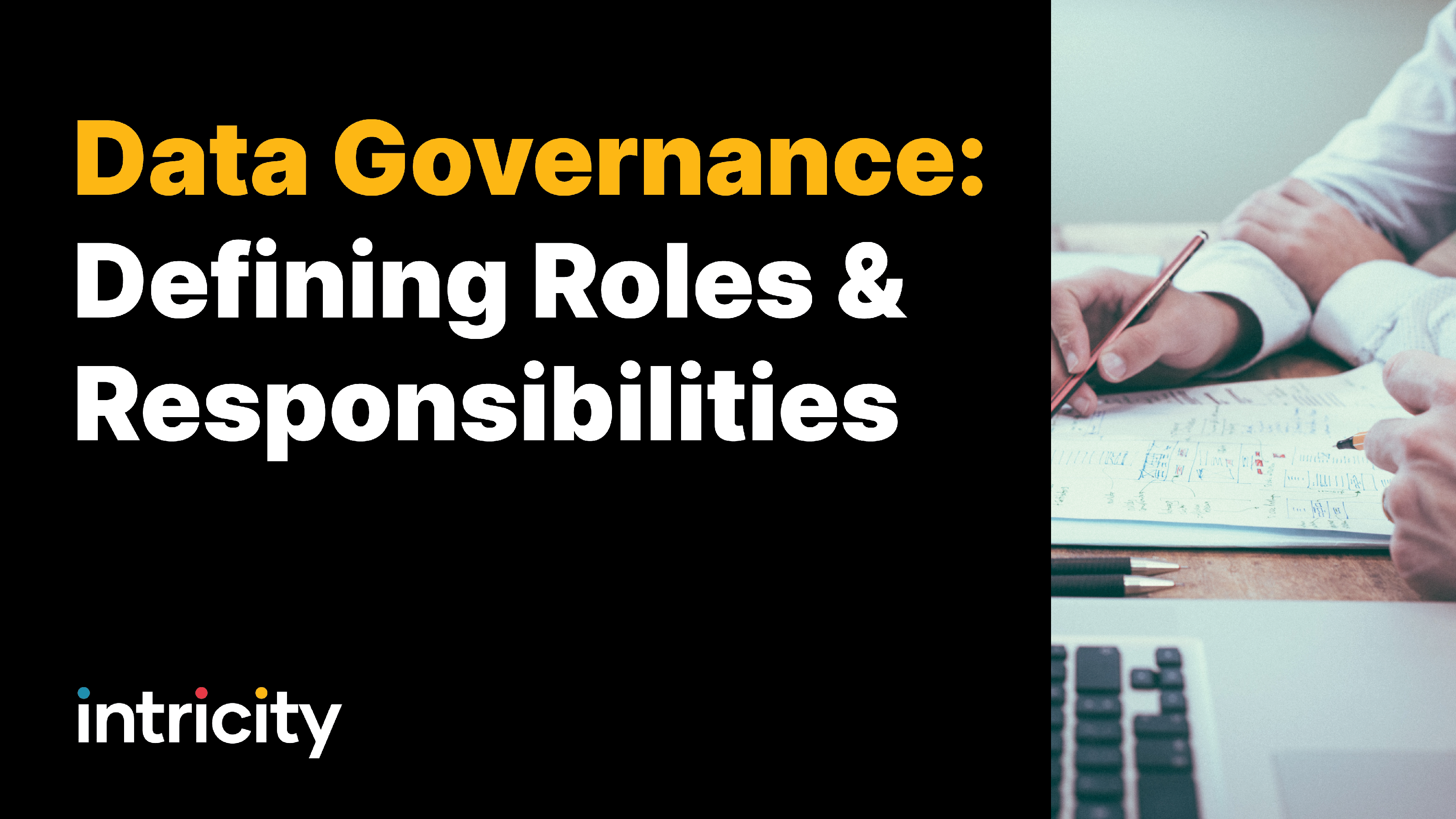
What are some of the signs that a company does not have data governance roles and responsibilities defined or needs to revisit them? Here are some possible signs of what this might look like for an organization and how you might approach this data governance challenge:
- Different departments have conflicting interpretations of how data should be collected, analyzed or used. Disagreements arise over who is responsible for managing a specific dataset or data-related task. Multiple people are involved in the decision-making process, but there's no clear delineation of who owns and covers what.
- Approach...Establish a Data Governance Committee: Form a cross-functional team consisting of key stakeholders from various departments such as IT, business, legal and compliance. This committee will be responsible for defining the data goverance strategy, policies and procedures for the organization.
- Two or more departments or individuals are working on the same data-related task (knowingly or unknowingly) and are unsure of who is responsible for which aspect of the task. Data quality checks are performed redundantly by different teams which leads to inefficiencies and possible errors. There's no clear ownership of specific data assets.
- Approach...Identify Data Stewards: Appoint data stewards from each department who will be responsible for the management, quality and integrity of the data within their respective domains. Data stewards should have a deep understanding of the data they are responsible for as well as the processes and systems that interact with the data.
- No one, individual or department, takes ownership of data-related tasks or decisions which leads to delays or missed opportunities for the organization. Data quality issues are not addressed because no one feels responsible for identifying or resolving them. Decisions related to data management are made without consulting relevant stakeholders which could lead to possible legal or compliance issues.
- Approach...Define Data Governance Roles and Responsibilities: Clearly outline the roles and responsibilities of the Data Governance Committee, data stewards and other relevant stakeholders. This includes defining the scope of authority, decision-making processes and accountability for each role.
- Different departments have different data definitions. Data can be entered inconsistently across different systems. Eventually there will be multiple versions of the same data asset in use. All of this leads to inaccuracies, errors or incomplete reporting and analytics.
- Approach...Develop and Implement Data Governance Policies: Create a set of data governance policies that provide guidelines for data management, data quality, data security and data privacy. These policies should be aligned with the organization's strategic objectives and regulatory requirements.
- With no clear ownership of data quality, the data becomes unmaintained and unmanaged. The information collected becomes outdated or incomplete which leads to errors in analysis and decision making for organization leaders.
- Approach...Formalize Communication Channels: Set up and document communication channels for data governance stakeholders to collaborate and share information. This can include regular meetings, email groups, collaboration tools like Slack or Teams and communication within data catalogs.
- When there is no clear ownership of compliance-related data management tasks, organizations open themselves up to legal or compliane issues and potential financial liabilities. There's a lack of adherence to GDPR, CCPA and other compliance policies. Data breaches occur due to lack of proper data governance.
- Approach...Train and Educate Employees: Ensure that all employees, not just those involved in data governance, understand the downstream impact of poor data governance and their role in supporting it. Provide easy-to-consume training materials to help employees stick to best practices.
- Data-related decisions are made without consulting all relevant stakeholders, leading to misalignment, dissatisfaction and missed opportunities. Different teams have different interpretations of data-related policies and there is no clear communication channels for sharing data-related information. Information silos and inefficiencies will emerge.
- Approach...Establish a Data Catalog: Ensure there is a data catalog which teams can check to determine they are working with the most relevant data. Train teams to use the data catalog collaboration functions to expand its accessibility to non-expert users.
Starting
There's a point where not defining roles and responsibilities becomes non-negotiable. This usually occurs when the organization's leadership sees a train wreck from all the dysfunction. Unfortunately, it is very difficult to get data governance to be a priority without such a train wreck happening first. This is because data governance isn't in the face of executives. Well, it is, but they don't know it. Nor will they pay much attention to it, like ignoring an upgrade to the New Orleans levee before the hurricane. The issue is that starting a data governance program after a catastrophe tends to lead large organizations into a massive effort ending in a black hole where the organization throws away millions of dollars.
Surprisingly the right place to start is with a small containable problem that has an achievable win. The win starts with an executive sponsor that can champion the win and can demonstrate its impact on the business. The process owner that benefits from the win under the executive sponsor also should be engaged as their team members will likely be participating as data stewards or process owners may be a data steward themselves. A data governance architect can execute all the collaboration between parties and own the milestones to ensure the program doesn't lose momentum. Lastly, the team will need a technical expert that can build automation to execute the designed changes to the data.
Now there are a whole lot of other role specialties that can be tacked onto a data governance program to turn it into a black hole. But a small scrappy team with a small containable goal can make a meaningful team without creating the "black hole." Yes, all the problems and approaches mentioned earlier are valid ways of addressing the challenge, but if those can occur organically (when addressing specific problems) rather than via top-down mandates, the results tend to be less expensive. By building win after win, the program can gracefully become a business practice.
Continue Learning:
Who is Intricity?
Intricity is a specialized selection of over 100 Data Management Professionals, with offices located across the USA and Headquarters in New York City. Our team of experts has implemented in a variety of Industries including, Healthcare, Insurance, Manufacturing, Financial Services, Media, Pharmaceutical, Retail, and others. Intricity is uniquely positioned as a partner to the business that deeply understands what makes the data tick. This joint knowledge and acumen has positioned Intricity to beat out its Big 4 competitors time and time again. Intricity’s area of expertise spans the entirety of the information lifecycle. This means when you’re problem involves data; Intricity will be a trusted partner. Intricity's services cover a broad range of data-to-information engineering needs:
What Makes Intricity Different?
While Intricity conducts highly intricate and complex data management projects, Intricity is first a foremost a Business User Centric consulting company. Our internal slogan is to Simplify Complexity. This means that we take complex data management challenges and not only make them understandable to the business but also make them easier to operate. Intricity does this through using tools and techniques that are familiar to business people but adapted for IT content.
Thought Leadership
Intricity authors a highly sought after Data Management Video Series targeted towards Business Stakeholders at https://www.intricity.com/videos. These videos are used in universities across the world. Here is a small set of universities leveraging Intricity’s videos as a teaching tool:

Talk With a Specialist
If you would like to talk with an Intricity Specialist about your particular scenario, don’t hesitate to reach out to us. You can write us an email: specialist@intricity.com
(C) 2023 by Intricity, LLC
This content is the sole property of Intricity LLC. No reproduction can be made without Intricity's explicit consent.
Intricity, LLC. 244 Fifth Avenue Suite 2026 New York, NY 10001
Phone: 212.461.1100 • Fax: 212.461.1110 • Website: www.intricity.com

Sample@gmail.com appears invalid. We can send you a quick validation email to confirm it's yours


